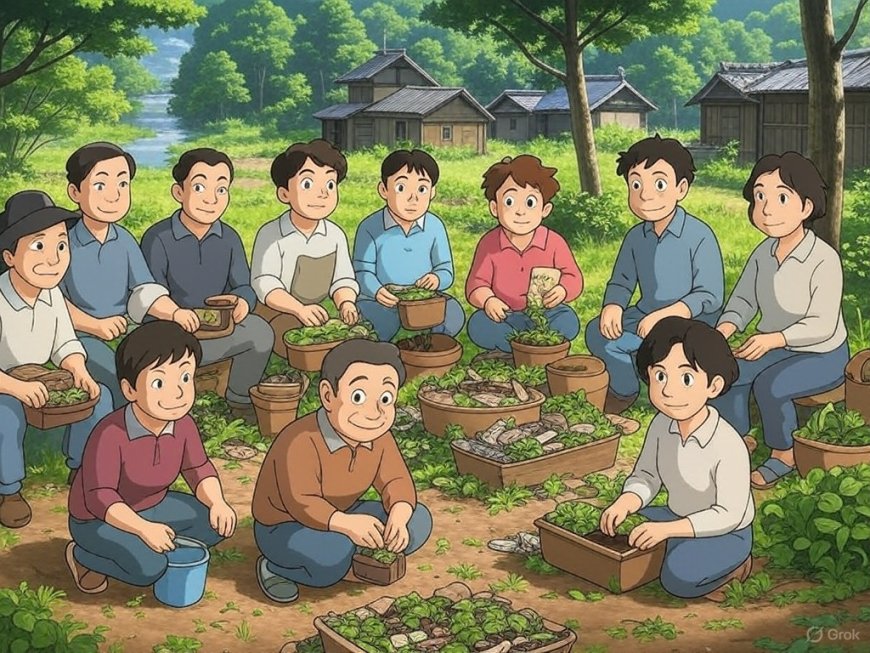Low-Waste Living Made Simple: Small Everyday Swaps That Have a Big Impact
Discover how to embrace low-waste living with simple, affordable everyday swaps that reduce your environmental footprint. Make a difference without overhauling your lifestyle.

The idea of “zero waste” can feel intimidating. But here’s the truth: you don’t need to fit all your yearly trash in a mason jar to make a real difference. Low-waste living isn’t about perfection—it’s about progress through mindful choices.
By making small, intentional swaps in your everyday habits, you can significantly reduce your impact on the planet while also simplifying your life and often saving money in the long run.
Why Low-Waste Living Matters
Every year, the world generates over 2 billion tonnes of waste, with at least 33% of it not managed in an environmentally safe manner, according to the World Bank. That’s not just bad news for the earth—it affects our oceans, air quality, and long-term food security.
Low-waste living is about reducing unnecessary consumption, reusing what we can, and making sustainable choices that create less trash from the start.
12 Everyday Low-Waste Swaps That Are Easy to Start Today
These are not expensive eco-trends. These are simple changes that can truly reshape your home, habits, and mindset.
1. Reusable Grocery Bags Instead of Plastic Bags
Plastic bags take centuries to break down, and most aren't recyclable. A sturdy cotton or canvas tote is a long-lasting alternative.
? NRDC on Reducing Plastic Pollution
2. Glass or Steel Water Bottles Over Single-Use Plastic Bottles
One reusable bottle can replace hundreds of disposable ones each year. It also helps you avoid microplastics.
? National Geographic: The Problem With Plastic Bottles
3. Beeswax Wraps Instead of Plastic Wrap
Beeswax wraps are washable, biodegradable, and keep food fresh just as well. Perfect for sandwiches, produce, or leftover containers.
? BBC Good Food on Beeswax Wraps
4. Compostable Bamboo Toothbrushes Instead of Plastic Ones
Plastic toothbrushes never truly decompose. Bamboo versions work just as well and can be composted after removing the bristles.
? Colgate: Are Bamboo Toothbrushes Better for the Environment?
5. Bar Soap Over Liquid Soap in Plastic Bottles
Bar soaps last longer, use less packaging, and are widely available in package-free options. Choose plant-based bars when possible.
6. Refillable Cleaning Products Instead of Single-Use Sprays
Switch to brands that offer refill concentrates or allow you to reuse original bottles. Many even ship plastic-free.
? EPA – Safer Choice Cleaning Products
7. Reusable Cloths Instead of Paper Towels
Cut down on paper waste by switching to microfiber or cotton cloths for cleaning. They’re washable and far more absorbent.
8. Menstrual Cups or Cloth Pads Over Disposables
The average person uses 11,000 disposable menstrual products in a lifetime. Menstrual cups last up to 10 years.
? Cleveland Clinic: Are Menstrual Cups Safe?
9. Bulk Pantry Goods in Glass Jars Instead of Packaged Foods
Buying in bulk means less packaging and better value. Store items like rice, nuts, and legumes in reusable jars at home.
10. Digital Receipts Instead of Printed Ones
Many stores now offer email or app-based receipts. Paper receipts are often coated in BPA and can’t be recycled.
11. DIY Coffee or Tea Instead of Takeaway Cups
Disposable cups are often lined with plastic and not recyclable. Brew your favorite beverage at home or bring your own thermos.
12. Repair Instead of Replace
Before tossing a torn shirt or worn appliance, look into repair guides or local fix-it events. Extending the life of your items is one of the greenest choices you can make.
? iFixit – Repair Guides for Everything
How to Get Started with Low-Waste Living
1. Take Inventory of Your Waste
Spend one week observing what you throw away. Is it mostly food packaging, paper towels, or single-use containers? Start there.
2. Swap Gradually, Not All at Once
Sustainability is about long-term change. Finish what you have and replace it with a better alternative when it’s used up.
3. Focus on the 5 R’s
As popularized by environmentalist Bea Johnson, remember: Refuse, Reduce, Reuse, Recycle, and Rot (compost)—in that order.
4. Support Brands That Reduce Waste
From zero-waste stores to refillable beauty brands, where you spend your money matters. Your purchases help shape market demand.
? Earth911 – Where to Find Zero Waste Stores Near You
Is Low-Waste Living Expensive?
It doesn’t have to be. In fact, over time, you often spend less by:
-
Buying fewer disposables
-
Avoiding overpriced packaging
-
Learning basic DIYs (like cleaners or face scrubs)
-
Shopping secondhand
The key is shifting from a disposable mindset to a durable one.
Final Thoughts: Small Swaps. Big Change.
You don’t have to live off the grid to make a difference. By choosing just a few low-waste swaps, you can lower your carbon footprint, support a healthier planet, and encourage others around you to do the same.
And remember—every time you reuse, refuse, or rethink, you’re taking a powerful stand for a better future.
Looking for more practical wellness and sustainability tips?
Visit our website: https://www.wellnesswire.in — your go-to source for clean living, mindful choices, and modern wellness.
What's Your Reaction?
 Like
0
Like
0
 Dislike
0
Dislike
0
 Love
0
Love
0
 Funny
0
Funny
0
 Angry
0
Angry
0
 Sad
0
Sad
0
 Wow
0
Wow
0



















































